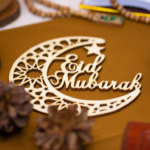Eid al- Fitr is one of the most exciting and fascinating celebrations for Muslims around the world, marking the end of Ramadan with joy and gratitude! In 2025, this festival will bring together families and communities to honor their faith and shared traditions. You might be surprised to know that over 1.6 billion Muslims globally participate in this celebration.It’s a day filled with joy, giving, and connecting with loved ones. In this article, we’ll delve into the significance of Eid al-Fitr, its customs, and how to make the most of this special occasion in 2025.
What is Eid al-Fitr?
Yearly two Eids for Muslims’ Eid-Al- Fitr and Eid -al-Azha. Eid al-Fitr is a day of waiting for one year, often called simply as Eid, is a significant festival in the Islamic calendar that celebrates the conclusion of Ramadan, the month of fasting. The name translates to “Festival of Breaking the Fast,” and it’s a time for Muslims to express gratitude, and joy, for the strength shown during Ramadan and the blessings received. On this day, families, Children gather for communal prayers, share festive meals, and engage in charitable acts, come to one -another’s house, neighbours and their relative’s houses.
One of the key aspects of Eid al-Fitr is the sense of community it fosters. It’s a time when people come together, after spending their fasting month, back to their previous life, and celebrate strengthening bonds by visiting each other’s house. As someone who has celebrated Eid for years, I can attest to the joy of reuniting with family and friends, sharing laughter, and creating lasting memories.
When is Eid al-Fitr 2025?
In 2025, Eid al-Fitr is expected to be observed on April 10, depending on the sighting of the moon, which marks the beginning and the end of Ramadan. The Islamic calendar is lunar, so the exact date may vary by location. As the date approaches, it’s important to stay updated through your local mosque or Islamic community centers.
The anticipation builds as people prepare for the festival. Many set up their Eid prayers in the early morning, often attending communal prayers at mosques or outdoor venues. It’s a scenic sight to see people dressed in their finest attire, gathering in unity to celebrate.
Traditional Customs and Practices
Although Eid al-Fitr is rich with traditions that vary by region, it shares common themes. The day typically starts with a special prayer known as the Eid prayer, which is performed in mosques. Before the prayer, it is compulsory to give Zakat al-Fitr, and richest people give Zakat,a form of charity that ensures everyone, especially the less fortunate people , can enjoy the day.
Food plays a vital role in Eid celebrations. Every family prepares special dishes and sweets, Semay is very popular,often incorporating regional flavors. For instance, in my family,Eid is incomplete without Sheer Khurma, a delicious sweet vermicelli dish. Sharing meals with neighbors and friends is also a common practice, reinforcing community ties as well.
Celebrating Eid al-Fitr Around the World
Eid al-Fitr is celebrated in diverse ways across different cultures and countries. In Indonesia, the world’s largest Muslim-majority country, families return to their hometowns to celebrate Eid, and this tradition is known as mudik. In Turkey, the festival is called Ramazan Bayramı, where people visit graves of loved ones and prepare lavish meals.
In the United States, celebrations often blend traditional customs with local community influences. You’ll find Eid fairs with food stalls, cultural performances, and activities for children. It’s a time for Muslims to demonstrate their traditions while engaging with the broader community and society.
Preparing for Eid al-Fitr
Preparation for Eid can be a joyful yet hectic experience for some people. Many people begin shopping weeks in advance for Eid Day, purchasing new clothes, decorations, and ingredients for special dishes. Therefore, lower income people can mitigate their needs through Zakat al-Fitr. It’s also a time to reflect on giving back. Participating in charitable initiatives, such as donating food or money, can make a significant impact on those in need.
Involving children in the preparations can create excitement. Whether it’s helping to bake sweets or selecting their outfits, visiting one another’s house, places, these activities foster a sense of understanding of the festival’s significance.
Eco-Friendly Celebrations for Eid
As the world becomes more conscious of environmental issues, finding sustainable ways to celebrate Eid al -Fitr is essential. Encourage your community to participate in green initiatives, such as tree planting or recycling programs during Eid gatherings.
In my experience, making small changes can create a big impact in our society. For instance, instead of disposable plates and cutlery, we use washable sets, which not only reduce waste but also add a touch of elegance to the celebrations.
Eid al-Fitr 2025 is a beautiful reminder of the joy and gratitude in which we can share within our communities. As we come together to celebrate the end of Ramadan, it reminds us of the importance of charity, family, and cultural traditions. Whether you’re attending prayers, enjoying festive meals, or participating in community events, every moment can deepen our connections and foster a sense of belonging.
I encourage you to embrace the spirit of Eid-al Fitr in a way that resonates with you, whether through acts of kindness, sustainable practices, or simply cherishing time with loved ones. Share your own experiences and tips for celebrating Eid-al Fitr in the comments below! Together, we can create a richer tapestry of celebration, honoring the diversity and unity that Eid al-Fitr represents globally.







